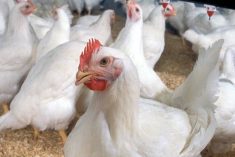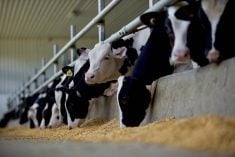Ottawa is moving ahead with plans to modernize the variety registration system, the system that is used to approve new seed varieties in Canada.
Federal agriculture minister Gerry Ritz announced April 14 that efforts to streamline the variety registration (VR) system will go ahead following additional consultations with industry groups over the next few months.
Among other things, the proposals offer these three key changes:
• Replacing Canada’s three-part variety registration system with a two-part system that uses either “basic” or “enhanced” registration criteria.
• The adoption of so-called model operating procedures, or MOPs, to be implemented by all committees that recommend new crop lines for commercial registration in Canada.
Read Also

CBOT Weekly: China, shutdown guiding the market
The United States grain and oilseed markets are currently dominated by two factors, said Ryan Ettner, broker with Allendale Inc. in McHenry, Ill. Ettner said those are the absence of a trade deal with China and the ongoing United States government shutdown.
• The adoption of a new procedure known as “incorporation by reference,” which will allow different crop types to be moved more quickly from basic registration to enhanced registration, or vice versa.
The incorporation by reference system is expected to speed up administrative changes by as much as 24 months, resulting in a more flexible and efficient VR system that requires less bureaucratic interference.
Ritz said the changes “will give Canadian farmers faster access to the newest cutting-edge varieties” and “remove bureaucratic hurdles that impede farmers’ competitiveness.”
“We value the participation of the entire crop value chain in making these changes, which will facilitate innovation and productivity, minimize red tape and deliver on the performance demands of our farmers and the quality demands of our customers,” said Ritz, who announced the changes at the Canada Grains Council’s Canadian Global Crops Symposium in Saskatoon.
One of the most notable aspects of the proposed VR changes is a plan to replace Canada’s current three-part system with a two-part system that uses either “basic” or “enhanced” registration criteria.
Crops that use the enhanced registration criteria will still require merit assessment to ensure that new varieties offer suitable agronomic performance, disease resistance packages and end-use quality characteristics.
It is expected that most major crop types including wheat, barley, oats, rye, triticale, flax, canola and mustard would use enhanced registration protocols, at least initially.
Consensus on the placement of pulse crops has been more difficult to achieve.
As well, it remains to be seen how privately generated trial data will be accommodated in the revised variety registration system but officials at the Canadian Food Inspection Agency said recently that the changes might allow foreign data to be used more frequently.
For example, it is likely that crop data compiled in some U.S. agro-ecological zones will be used more routinely in the Canadian variety registration process, as long as the growing conditions, environmental factors and disease pressures in those U.S. zones are deemed similar to conditions that exist in Canada.
Contact brian.cross@producer.com















